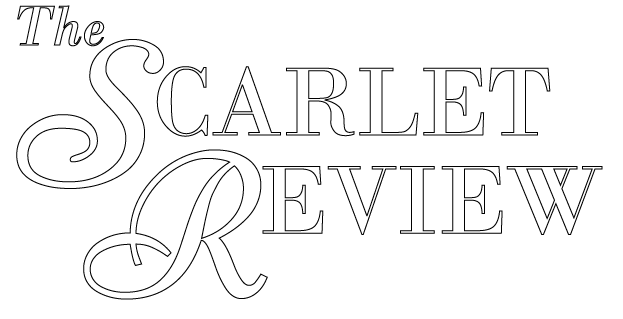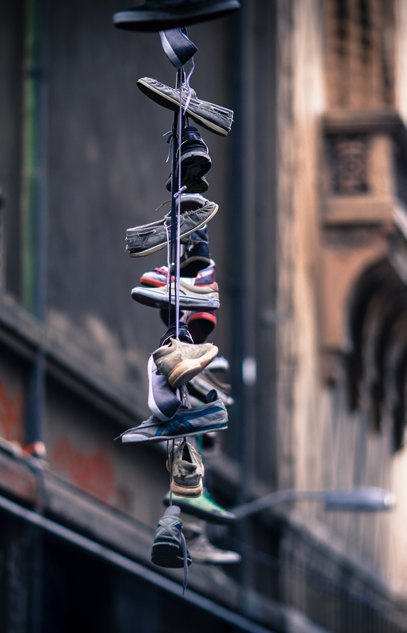






With the recent legalization of marijuana in several states, we are slowly beginning to see a change in public sentiment regarding drug policy. Though drugs have existed in the U.S. since its inception, it was only in the last half century that the enforcement of drug laws has been such a large priority for the federal government; consequently, it was within that same time period that our incarceration rate has risen four fold – higher than that of any other country in the world. There are a number of other adverse effects caused by current policy as well. In an effort to win the War on Drugs, the U.S. has, since the 1970s, focused its efforts on stopping the supply of drugs. This "supply-side" policy, which focuses on the interdiction and eradication of drugs, has demonstrably failed, never accomplishing its overall goal of curbing American drug use. Efforts to stop the demand for drugs have had less of a focus, and they have consisted largely of punitive measures against drug users – efforts that have also failed. But there is evidence to suggest that policies focusing on lowering the demand for drugs can be effective. They do this not through criminalizing drugs, but by preventing would-be drug users through education, and helping current drug users through treatment. This essay examines why the U.S. should decriminalize, and in some cases, legalize drugs; and should focus less on enforcement and punishment, and more on education, prevention and treatment.
To fully understand current drug policy – how it originated, how it failed, and how it could be fixed – we need to take a look at the history of drugs in the U.S., and the laws surrounding them.
In 1930, the Federal Bureau of Narcotics was created by the Treasury Department. Until 1962, Harry J. Anslinger, who had a large impact on America’s drug policy, headed the FBN. Under Anslinger's tenure, drugs in America were increasingly criminalized. Anslinger used propaganda to help shape public opinion and said that marijuana caused people to "fly into a delirious rage and many commit violent crimes” (McWilliams 70). With the Marijuana Tax Act of 1937, a tax was imposed on the sale of cannabis and farmers were required to register with the government or buy stamps. The Act would later be repealed in 1970, but because so few people were ever registered, the law had "become, in effect, solely a criminal law, imposing sanctions upon persons who sell, acquire or possess marijuana", as stated by President Johnson's Commission on Law Enforcement and Administration of Justice in 1967. Other acts, such as the Boggs Act of 1951 and the Narcotics Control Act of 1956 would impose harsher penalties for drug use, possession and sales. The FBN would go on to become the Bureau of Narcotics in Dangerous Drugs in 1968, the predecessor to what is now the Drug Enforcement Administration, or DEA.
With the counterculture movement of the 1960s and the return of soldiers after the Vietnam War, came an increase in drug use in America. In response, the Narcotic Addiction Rehabilitation Act was passed in 1966. While its aim was to help people charged with federal criminal laws by providing them with treatment and rehabilitation, it was never very effective due to a lack of funding, and helped only a very small number of addicts (GAO).
The War on Drugs that we know today began in 1970 with the Comprehensive Drug Abuse Prevention and Control Act – a federal law which, in addition to other things, classified controlled substances into five schedules dependent upon their accepted medical uses or potential for abuse – and with the Controlled Substances Act – the framework that laid down the laws which are used to govern the manufacturing and distribution of drugs. The following year, Richard Nixon proclaimed: "America's public enemy number one in the United States is drug abuse. In order to fight and defeat this enemy, it is necessary to use a new, all-out offensive” (Sharp 1). But in the same year, Nixon also said "as long as there is a demand, there will be those willing to take the risks of meeting the demand” (Sharp 27). It did not change anything, however, and under Nixon the DEA was created, and the U.S. began taking steps to stop the flow of drugs from Mexico into the country.
Presidents Jimmy Carter and Ronald Reagan would both go on to echo sentiments similar to Nixon's. In 1977, Carter called for the decriminalization of marijuana, and told Congress: "penalties against possession of the drug should not be more damaging than the drug itself” (Rosenberger 25). There were no lasting effects however, and drug policy still focused mainly on stopping the supply of drugs. In 1981, President Reagan said in a speech, "It's far more effective if you take the customers away than if you try to take the drugs away from those who want to be customers,” but he failed to heed his own advice. In Reagan's first term, annual funding for supply-side interdiction and eradication programs rose to about $1.4 billion, up from $437 million during Carter's presidency. Funding for demand-side prevention and rehabilitation programs was cut from an annual $386 million to $362 million (Rosenberger 26). It was during Reagan's presidency that the U.S. really cracked down on drugs. He's largely responsible for popularizing "zero-tolerance" drug policies, and it was during his term that the incarceration rate began to grow exponentially, doubling to over one million people in prison and jails (bjs.gov).
Since Reagan's presidency, the incarceration rate continued to grow. From 1980 to 2009, the total incarcerated population had risen from 500,000 to 2.2 million. Of those in federal prison – over 200,000 people in 2015 – over 48% are incarcerated for drug offenses. Of those in state prisons – over 1.3 million people in 2013 – 16% are incarcerated for drug-related crimes. An additional 740,000 people are in county and city jails as of 2014. Using the most recent statistics, the U.S. has an incarceration rate of about 725 people per 100,000 populations, which is the highest in the world (Roeder).
Another metric which can be examined is the annual federal drug budget. In the past forty years, the U.S. has spent over one trillion dollars fighting the War on Drugs. This year alone, the government will spend over $25 billion. But when, as Jimmy Carter wrote in a 2011 New York Times op-ed, "the global consumption of opiates has increased 34.5%, cocaine 27% and cannabis 8.5% from 1998 to 2008,” you have to ask: is it even worth it (Carter)?
It is clear that attempting to get rid of the supply of drugs does not work and does not lower demand. It is also clear that punishing drug users and even small-time drug dealers does not work. A non-punitive, demand-side drug policy is what's needed; lower the demand for drugs, not through punishment but through treatment, education and prevention. Decriminalizing all drugs and legalizing marijuana can do this. With the money generated from a sales tax on marijuana – sales in Colorado alone has generated more than $70 million within a year – and with money saved by reducing our supply-side focused initiatives, we can afford to focus more on the demand-side, specifically treatment, rehabilitation and education.
First, it's important to acknowledge and understand the distinction between decriminalization and legalization. Decriminalization simply means that drug use and drug possession for personal use is no longer a criminal offense. You won't end up in prison if you're caught with drugs on your person, in your car or in your home; instead, you may have to pay a ticket or a fine. Legalization means that drug use and drug possession for personal use is legal, and it also means that drug sales are legal, though subject to some sort of regulation. Marijuana, for example, was legalized, though not decriminalized, in Colorado in 2012 (available for sale in 2014). People can legally purchase, grow and consume marijuana in Colorado, but there are of course rules and restrictions, just like there are with alcohol or tobacco.
In 2001, Portugal enacted new policy that decriminalized all drugs. It was the first country in the world to do so, and it remains the only country that has fully decriminalized drugs. Drugs became a big issue in Portugal after it ceased to be a dictatorship in 1974. Because drugs are not legal, it is still technically illegal to use, possess or sell them, but it is only treated as a criminal case if there is evidence to suggest someone may be a drug dealer or trafficker (if they have more than what's determined to be sufficient for personal consumption). If a typical user is caught with drugs, they'll face a fine at most, and will have the option to get help if they're addicted. Rather than criminalizing drug users, Portugal looked at drug use as a health problem and chose to treat it as such. In doing so, they were able to not just lower drug use, but lower drug related deaths and make it easier for addicts to get treatment (Greenwald).
This new drug policy would entail a major paradigm shift; supply-side drug policy that has historically focused on the interdiction and eradication of drugs (i.e., focusing efforts on stopping large-scale drug manufacturing, distribution, importation, cartels) would be replaced with demand-side policy focusing on lowering drug demand (i.e., focusing efforts on lowering drug demand from drug users). This is not to say that all supply-side efforts would be stopped; rather there would simply be a reallocation of funds and attention to demand-side efforts. Also, new demand-side efforts would differ from past demand-side efforts (e.g., Reagan's "Zero Tolerance" policies for drug users) in that policies would be focused on rehabilitation and drug use prevention through education, rather than punitive measures and actions against users or low-level dealers .